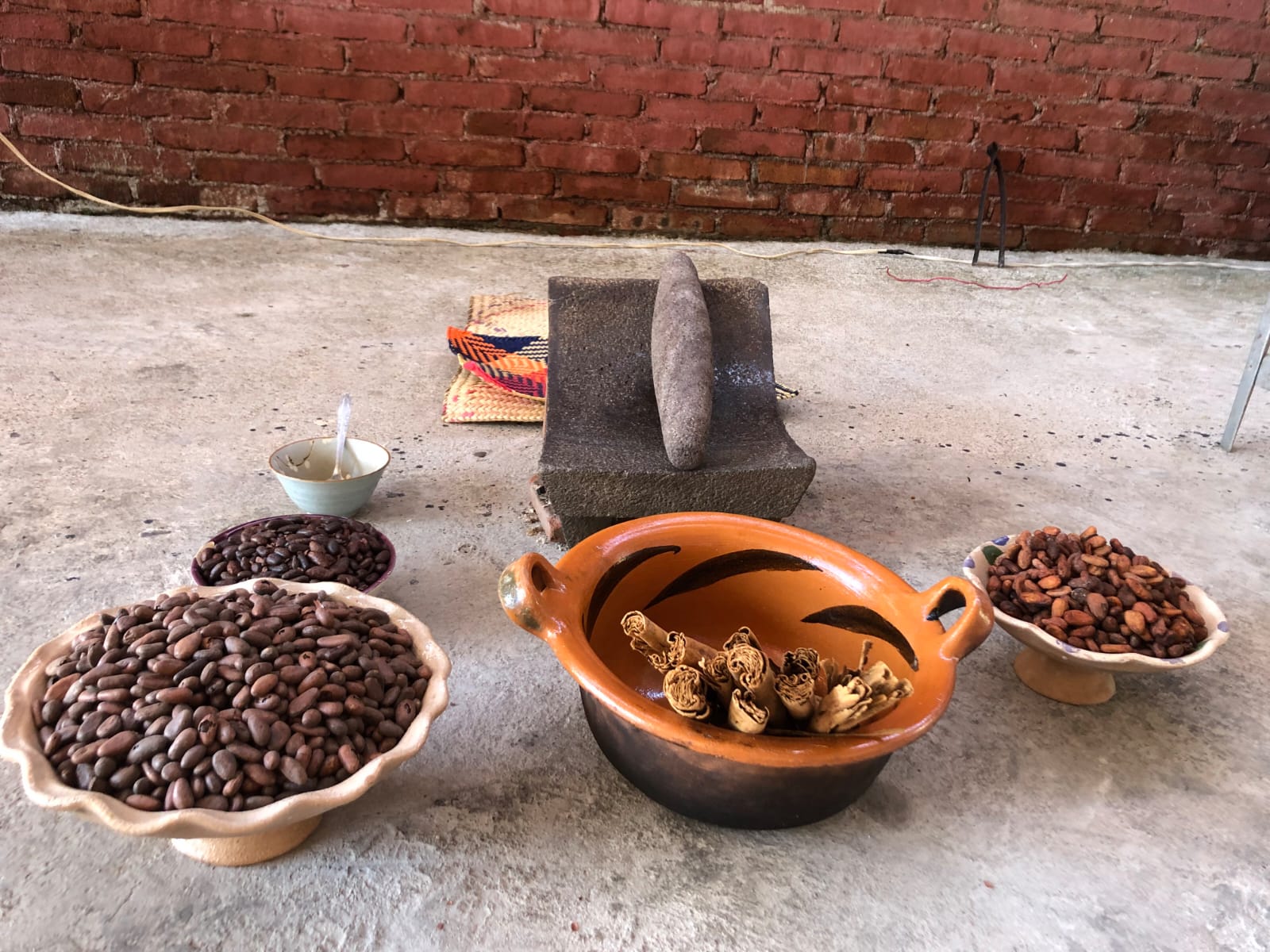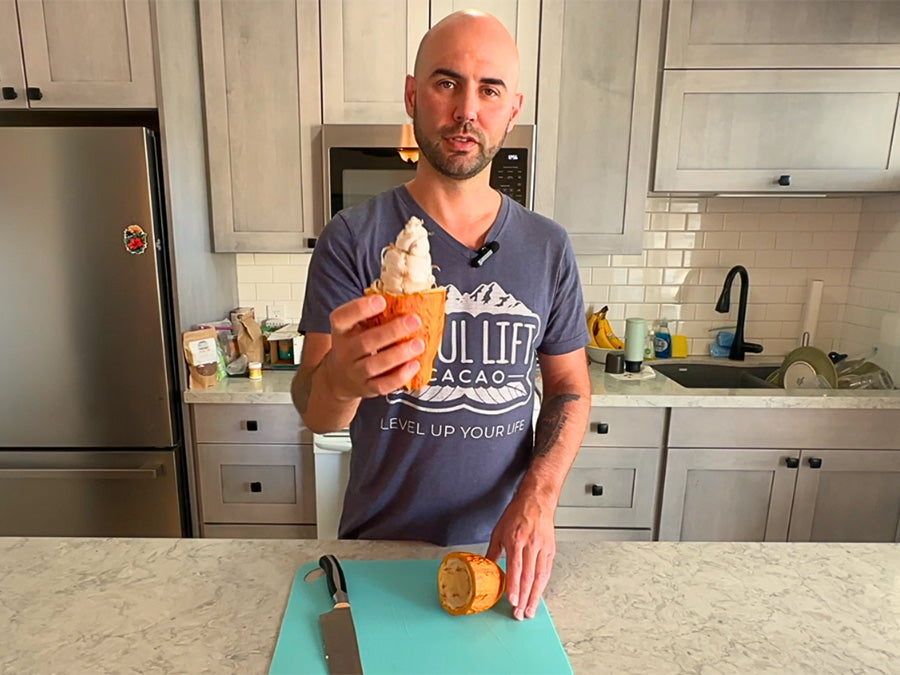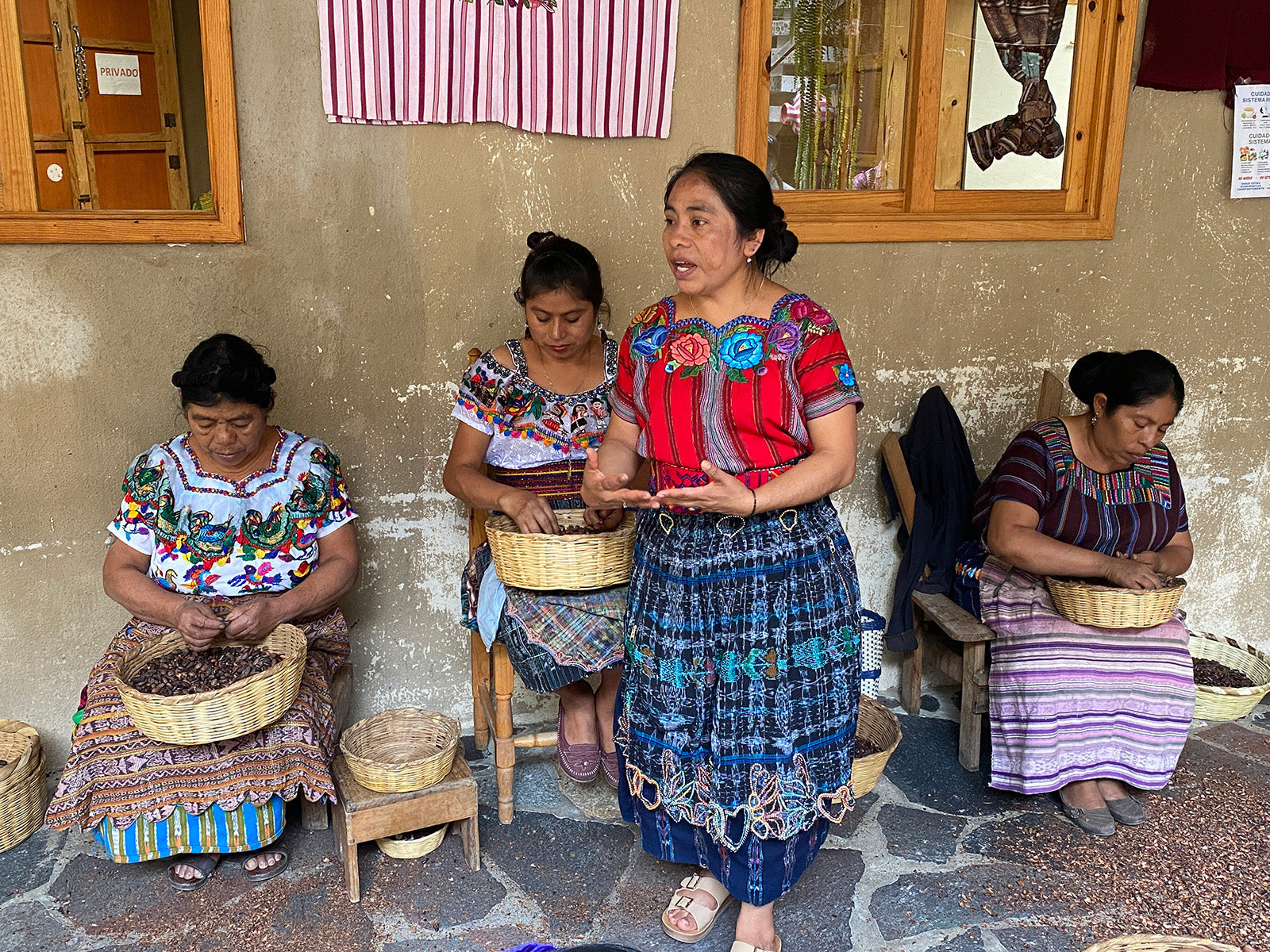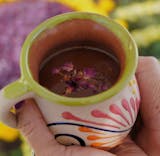(Women in the Heart of the Earth ceremonial cacao collective peeling cacao seeds by hand. Photo by Andrea Bakacs.)
Published 8/29/2023
Cacao is often called a superfood. But what does that actually mean?
One of the things that makes cacao a superfood is that it's high in antioxidants. Yet even after extensive research, this idea can be somewhat abstract.
It turns out that different natural foods can contain different types of antioxidant compounds. The ones most unique to cacao and chocolate are called flavonoids, which are in a family of compounds called polyphenols.
Research suggests that the flavonoids (a.k.a. flavanols) in cacao have benefits for the cardiovascular system and cognitive function.* Yet because society still considers chocolate a candy or an indulgence, the scientific results have not yet been fully acknowledged.
People talk about antioxidants in blueberries and acai. Yet it's possible that cacao has more antioxidants than any other food. We say "it's possible" because the body of research is still developing... but the evidence is striking.
A 2011 study found that the total polyphenol content of dark chocolate was significantly greater than acai, blueberry, and cranberry juice, and slightly greater than pomegranate juice.
The authors found that dark chocolate contained 24.78 mg of polyphenols per gram of chocolate. This appears to be on par or higher than other resources published about the content of dark chocolate.
The study also found that cocoa processed with alkali (as is common in "hot cocoa" mixes and some chocolate bars) has drastically lower antioxidants compared to dark chocolate and non-alkalized cocoa powder. The amount of polyphenols in alkalized cocoa was about 2.03 mg per gram of hot cocoa mix.
The study shows “cocoa powder” (which was defatted but non-alkalized, so probably the same as what’s sold as “cacao powder” in stores) somewhere in between, at about 16.25mg per gram of powder. (NOTE: This last number was deduced from a chart, since the precise number isn’t listed in the publicly available article).
A 2019 study evaluated polyphenols in a variety of roasted and unroasted cacao seeds (a.k.a “beans” or “grains”) from Colombia and Venezuela, and found a spectrum ranging from 9.96 to 37.8 mg of polyphenols per gram of cacao seed. In general, unroasted seeds had a higher polyphenol count than roasted seeds from the same origin, but the difference was usually minor.
The study found that chocolate often had a significantly higher amount of polyphenols when compared to the seeds used to make the chocolate. The authors speculate that this could be because more polyphenolic compounds are created during “high-temperature processes” – which could include grinding the seeds. But also, sometimes chocolate has additional cacao powder added to it, which could increase polyphenol count per gram of product.
The authors of the 2019 study mention that many factors can affect polyphenol count, such as cacao variety, geography, and processing methods. In their study, all Colombian varieties had higher amounts than the Venezuelan varieties.
What hasn't been clear up to this point is how ceremonial cacao – especially the traditionally prepared cacao that we carry – compares to any of the above.
We couldn't find solid data about antioxidant count in authentic ceremonial cacao, so in summer 2023 we had Heart of the Earth cacao tested for polyphenols. (NOTE: We chose this because the lab we work with said their total antioxidant, a.k.a. ORAC, test was not available for chocolate, and a flavonoid-specific test was cost-prohibitive for us.)
When compared to the existing research, we see the polyphenol test result as ground-breaking. Heart of the Earth cacao had 63.4 mg of polyphenols per gram of cacao. That's more than two times the amount in a gram of dark chocolate tested in the 2011 study! Plus it’s nearly twice the highest amount found in roasted or unroasted cacao seeds in the 2019 study.
Research into all the nutritional components of ceremonial cacao is lacking, so more peer-reviewed scientific studies are needed.
However it does appear that there’s a correlation between the amounts of key compounds in cacao.
For example, in our testing of theobromine and caffeine content in the single-origin cacao varieties we carry, the amounts tended to correlate. There was a fairly standard ratio of theobromine to caffeine per serving of ceremonial cacao (mean 4.62, median 4.67). In other words, the amount of theobromine was usually about 4 or 5 times the amount of caffeine, regardless of the variety.
From the varieties we had tested for those alkaloids, Heart of the Earth had the most of both by far. And Heart of the Earth clearly has a higher-than-average amount of polyphenols per serving. Even though we haven’t yet been able to test for flavonoids specifically (which appear to be the most interesting antioxidants in cacao in terms of potential health benefits), because flavonoids are the main type of polyphenols unique to cacao, it can be deduced that Heart of the Earth also has a relatively high amount of flavonoids.
The authors of the 2011 study concluded that antioxidant type and amount are enough alone to make cacao a “Super Food.” But with theobromine, neurotransmitters, minerals, and other interesting compounds, there’s so much more to understand about cacao.
We will remain committed to seeking fact-based information and sharing it transparently and honestly. By understanding ceremonial cacao in this “modern” way, we can support the preservation of indigenous traditions of growing and preparing cacao that have been used for thousands of years!
REFERENCES:
“Cacao seeds are a ‘Super Fruit’: A comparative analysis of various fruit powders and products.” Crozier, et al. 2011. https://www.ncbi.nlm.nih.gov/pmc/articles/PMC3038885/
“Comparison of the Total Polyphenol Content and Antioxidant Activity of Chocolate Obtained from Roasted and Unroasted Cocoa Beans from Different Regions of the World.” Urbańska and Kowalska. 2019. https://www.ncbi.nlm.nih.gov/pmc/articles/PMC6720223/
“Polyphenol.” Wikipedia. https://en.wikipedia.org/wiki/Polyphenol
“Healthy Foods High in Polyphenols.” WebMD. https://www.webmd.com/diet/foods-high-in-polyphenols
*The content on this page is for informational or educational purposes only, and does not substitute for professional medical advice or consultations with healthcare professionals. Health statements about cacao and chocolate have not been evaluated by the Food and Drug Administration. Our products are not meant to diagnose, treat, cure, or prevent any disease.
Related Posts

A blanket tariff on Mexican imports would have a devastating effect on the cost of Mitla ceremonial cacao, which is grow
Read More
Most people never see what comes before a cacao block, or even a drink. And it's a shame, because it can help us appreci
Read More
The price of Heart of the Earth cacao has risen a lot recently. Some factors are the same for all our cacao. Yet this un
Read More






